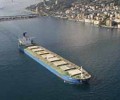Eurozone Finally Finds Itself Free of Deflation

For the first time in almost four years, none of the eurozone’s 19 members was in deflation during January, an encouragement to the European Central Bank in its long struggle to lift inflation to its target and keep it there.
The European Union’s statistics agency Wednesday confirmed an earlier estimate that showed consumer prices in the currency area were 1.8% higher than a year earlier, a jump from the 1.1% inflation rate recorded in December 2016 and within touching distance of the ECB’s target, which is close to, but below 2%.
Eurostat also recorded that consumer prices were higher on the year in all of the eurozone’s members, the first time that had happened since February 2013. Ireland, the last member to have been in deflation, saw prices rise by 0.2%, having experienced a fall of the same magnitude in December.
As recently as May 2016, consumer prices were down on the year in the eurozone as a whole. Since then, a recovery in energy prices has driven inflation steadily higher, bringing an increasing number of countries out of deflation.
ECB policy makers have been celebrating the waning of a threat that spurred them to launch the first in a series of stimulus measures in June 2014. Central bankers fear deflation, because once it takes hold and becomes self-sustaining, it is difficult to escape from, as Japan’s experience has shown.
While all of the eurozone’s members are now experiencing inflation, there remain wide divergences across the currency area. In January, the highest rate of inflation was the 3.1% recorded in Belgium, with Spain close at 2.9%. Spanish prices were falling as recently as last August.
In inflation-averse Germany, prices were 1.9% higher than a year earlier in January, amplifying calls for an end to ECB stimulus. The central bank has said it won’t consider a tapering of its stimulus programs until it is clear that inflation will remain at its target even after energy prices have stopped rising.
That would requires a pickup in the pace at which prices of other goods and services are rising, but there were few if any signs of a buildup in underlying inflationary pressures during January. The core rate of inflation–which excludes energy, food, alcohol and tobacco-was unchanged at 0.9%, and lower than in January 2016.
Source: Dow Jones
HEADLINES
- Do shipping markets want Biden or Trump for the win?
- All 18 crew safe after fire on Japanese-owned tanker off Singapore
- Singapore launching $44m co-investment initiative for maritime tech start-ups
- Cosco debuts Global Shipping Industry Chain Cooperation Initiative
- US warns of more shipping sanctions
- China continues seaport consolidation as Dalian offer goes unconditional